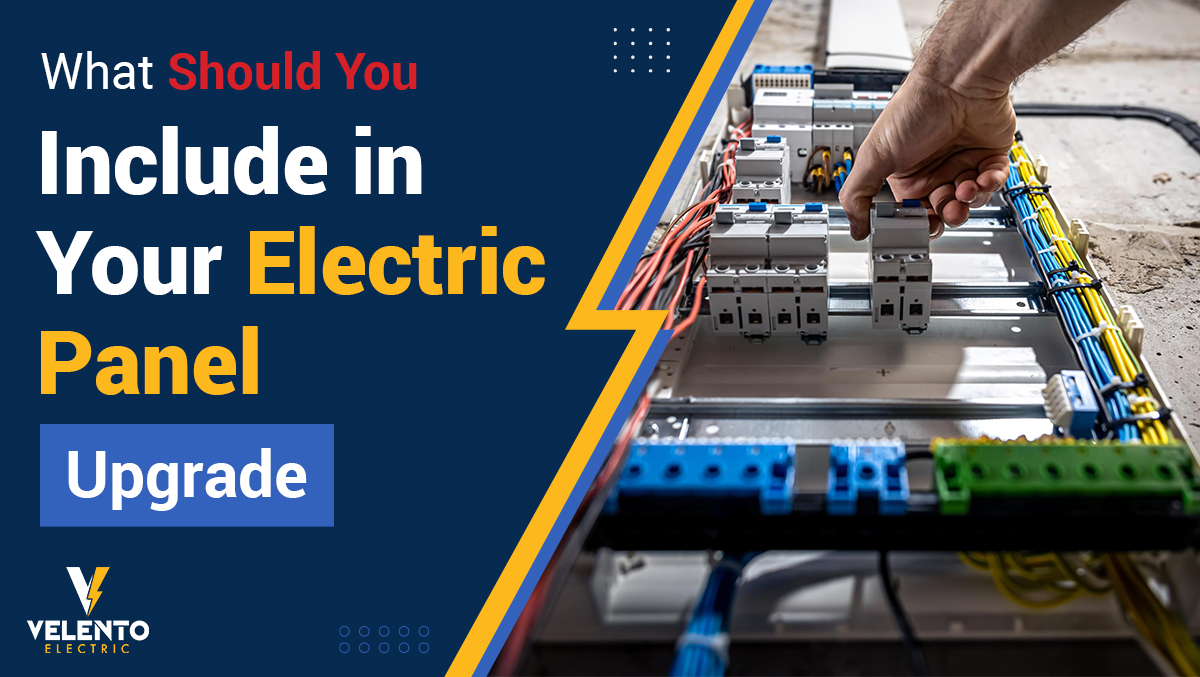When planning an electric panel upgrade, it’s essential to consider various factors to ensure the safety, functionality, and efficiency of your electrical system. Here are some key components to include in your electric panel upgrade:
- Assessment and Planning: Begin by conducting a thorough assessment of your existing electrical system to identify any deficiencies, safety hazards, or capacity limitations. Work with a licensed electrician to assess your electrical needs and determine the appropriate size and type of panel upgrade required for your home or business.
- Panel Size and Capacity: Choose a panel size and capacity that meets your current and future electrical demands. Consider factors such as the number of circuits needed, the types of appliances and equipment in use, and any planned expansions or renovations that may require additional electrical capacity. Upgrading to a larger panel with more circuit slots can accommodate future growth and prevent overloading.
- Panel Type and Configuration: Select a panel type and configuration that aligns with your electrical requirements and preferences. Common types of electric panels include main breaker panels, main lug panels, and subpanels. Choose a panel configuration (e.g., single-phase or three-phase) that is compatible with your electrical service and distribution needs.
- Circuit Breakers and Protection Devices: Install high-quality circuit breakers and protection devices to safeguard your electrical system against overcurrents, short circuits, and electrical faults. Choose circuit breakers with the appropriate ampacity ratings for each circuit, and consider additional features such as arc fault circuit interrupters (AFCIs) and ground fault circuit interrupters (GFCIs) for enhanced safety and code compliance.
- Grounding and Bonding: Ensure that your electric panel upgrade includes proper grounding and bonding provisions to protect against electrical shocks and minimize the risk of electrical fires. Install grounding electrodes, bonding jumpers, and grounding conductors according to local building codes and standards to establish a reliable electrical ground connection.
- Accessibility and Clearance: Position the electric panel in a convenient location with adequate clearance and accessibility for maintenance, inspection, and emergency access. Maintain minimum clearance distances around the panel to comply with safety codes and regulations, and avoid obstructing access panels, doors, or ventilation openings.
- Labeling and Documentation: Clearly label and document the circuits, breakers, and components within the electric panel to facilitate troubleshooting, maintenance, and repairs. Use standardized labeling conventions to identify each circuit’s function, location, and load capacity, and provide a detailed circuit directory for easy reference.
- Code Compliance and Permitting: Ensure that your electric panel upgrade complies with local building codes, electrical regulations, and permitting requirements. Obtain necessary permits and approvals from local authorities before starting work, and work with a licensed electrician who is familiar with applicable codes and standards to ensure compliance and safety.
- Future-Proofing and Scalability: Plan for future electrical needs and advancements by incorporating scalability and flexibility into your electric panel upgrade. Install conduit runs, spare circuit spaces, and provisions for future expansion or technology upgrades to accommodate changing requirements and emerging technologies without the need for major modifications.
- Professional Installation and Inspection: Hire a qualified and experienced electrician to perform the electric panel upgrade and ensure that all work is completed safely, accurately, and in compliance with industry standards. Schedule a final inspection by local authorities or a third-party inspector to verify code compliance and safety before energizing the upgraded electrical system.
- Surge Protection: Install surge protection devices (SPDs) to safeguard your electrical system and sensitive electronic devices from voltage surges caused by lightning strikes, power grid fluctuations, or electrical disturbances. Consider whole-house surge protectors installed at the main electric panel or individual surge protection devices for specific circuits or equipment.
- Energy Efficiency Upgrades: Incorporate energy-efficient components and features into your electric panel upgrade to reduce energy consumption, lower utility costs, and minimize environmental impact. Consider installing energy-efficient lighting controls, programmable thermostats, or smart home automation systems that optimize energy usage and enhance comfort and convenience.
- Backup Power Solutions: Explore backup power solutions such as standby generators or battery backup systems to provide emergency power during outages or disruptions to the electrical grid. Integrate backup power sources with your electric panel to ensure seamless operation and automatic transfer of power to critical circuits or loads in the event of a blackout or utility failure.
- Fire Safety Measures: Implement fire safety measures to mitigate the risk of electrical fires and enhance occupant safety. Install smoke detectors, carbon monoxide detectors, and heat sensors in strategic locations throughout your home or business, and integrate them with your electrical system for early detection and notification of potential hazards.
- Remote Monitoring and Management: Consider integrating remote monitoring and management capabilities into your electric panel upgrade to monitor, control, and optimize your electrical system remotely. Utilize smart meters, energy management systems, or IoT (Internet of Things) devices to track energy usage, detect anomalies, and remotely manage electrical loads for improved efficiency and performance.
- Electrical Safety Training: Provide electrical safety training and education for household members, employees, or occupants to promote awareness and understanding of electrical hazards and best practices. Teach proper procedures for identifying and responding to electrical emergencies, such as power outages, electrical shocks, or arc flashes, to minimize risks and ensure personal safety.
- Environmental Considerations: Consider environmental factors such as weatherproofing, moisture protection, and environmental sealing when selecting electric panel components and enclosure materials. Choose weather-resistant enclosures, corrosion-resistant hardware, and waterproof seals to protect against moisture ingress, temperature extremes, and environmental contaminants that can compromise electrical performance and longevity.
- Documentation and Records Management: Maintain comprehensive documentation and records of your electric panel upgrade, including installation manuals, equipment specifications, maintenance logs, and inspection reports. Keep digital and hard copies of important documents in a secure location for reference and archival purposes, and update them regularly to reflect any changes or upgrades to your electrical system.
- Load Balancing: Ensure that the electrical loads are evenly distributed across the circuits in your electric panel to prevent overloading and minimize the risk of electrical failures or tripped breakers. Work with your electrician to assess the load requirements for each circuit and redistribute loads as needed to achieve optimal balance and efficiency.
- Accessibility and Serviceability: Design the electric panel installation with accessibility and serviceability in mind to facilitate maintenance, repairs, and upgrades in the future. Ensure that the panel enclosure is easily accessible and located in a well-ventilated area with sufficient clearance for safe operation and maintenance activities. Consider installing removable panels or access doors for convenient access to internal components and wiring.
- Labeling and Identification: Properly label and identify all circuits, breakers, switches, and components within the electric panel to enhance safety, troubleshooting, and maintenance. Use clear and standardized labeling conventions to indicate the purpose, location, and rating of each circuit, breaker, and component, and provide a detailed circuit directory or legend for easy reference by occupants, technicians, or emergency responders.
- Conduit and Wiring Management: Implement effective conduit and wiring management practices to organize and protect electrical conductors and cables within the electric panel enclosure. Use appropriate sizes and types of conduit, raceways, and cable management accessories to route and secure wiring neatly and prevent tangling, chafing, or damage. Follow industry standards and best practices for cable routing, bundling, and termination to ensure compliance and reliability.
- Code Compliance and Safety Standards: Adhere to relevant electrical codes, regulations, and safety standards when planning and executing your electric panel upgrade to ensure compliance and mitigate risks. Consult with your electrician or electrical inspector to verify that the installation meets all applicable code requirements, including those related to grounding, bonding, insulation, spacing, and clearances. Prioritize safety and quality throughout the upgrade process to protect yourself, your property, and your occupants from electrical hazards and liabilities.
- Integration with Smart Home Technology: If desired, integrate your electric panel upgrade with smart home technology and automation systems to enhance convenience, efficiency, and control. Explore options for integrating smart meters, energy monitoring devices, smart switches, and home energy management platforms that allow you to monitor and manage your electrical usage, optimize energy efficiency, and automate routine tasks remotely via smartphone apps or voice commands.
- Warranty and Support: Select high-quality electric panel components and equipment from reputable manufacturers that offer warranties and technical support to ensure reliability and peace of mind. Choose products with robust warranties and responsive customer service to protect your investment and address any issues or concerns that may arise during installation, commissioning, or operation. Review warranty terms and conditions carefully and retain proof of purchase and warranty documentation for future reference and support.
- Emergency Preparedness: Consider incorporating emergency preparedness measures into your electric panel upgrade to ensure resilience and continuity of electrical supply during emergencies or disasters. Install backup power sources such as generators, battery backup systems, or uninterruptible power supplies (UPS) to provide temporary power in the event of a utility outage or disruption. Configure the electric panel to support automatic transfer switches or load shedding mechanisms that prioritize essential circuits or equipment during emergencies, such as medical devices, security systems, or communication infrastructure.
- Remote Monitoring and Diagnostics: Explore options for remote monitoring and diagnostics capabilities to enable proactive maintenance, troubleshooting, and performance optimization of your electric panel and associated systems. Implement monitoring sensors, data logging devices, or remote access interfaces that allow you to monitor real-time performance metrics, detect anomalies, and diagnose issues remotely from anywhere with internet access. Utilize advanced analytics and predictive maintenance algorithms to identify potential problems early, prevent downtime, and optimize system reliability and efficiency.
- Environmental Sustainability: Incorporate environmental sustainability principles into your electric panel upgrade to minimize energy consumption, reduce environmental impact, and promote eco-friendly practices. Choose energy-efficient components, materials, and technologies that comply with energy efficiency standards and certifications, such as ENERGY STAR ratings or LEED certification. Implement energy management strategies such as load shedding, demand response, or renewable energy integration to optimize energy usage, reduce carbon footprint, and contribute to environmental conservation efforts.
- Comprehensive Testing and Commissioning: Perform comprehensive testing and commissioning procedures to verify the proper operation, performance, and safety of your electric panel upgrade before putting it into service. Conduct functional tests, insulation resistance tests, ground fault tests, and circuit continuity checks to ensure that all components and systems are functioning as intended and meet applicable performance criteria. Document test results, observations, and findings in a commissioning report or certificate for validation and verification purposes, and address any issues or deficiencies identified during testing before final acceptance and handover.
- User Training and Education: Provide user training and education for occupants, maintenance personnel, or facility managers to familiarize them with the operation, maintenance, and safety procedures associated with the upgraded electric panel and electrical systems. Offer training sessions, instructional materials, or online resources that cover topics such as electrical safety practices, emergency procedures, system operation, and troubleshooting techniques. Empower users with the knowledge and skills to operate the electric panel safely, efficiently, and effectively, and encourage ongoing engagement and participation in electrical safety and maintenance programs.
- Long-Term Maintenance Planning: Develop a long-term maintenance plan and schedule for the ongoing care, inspection, and maintenance of your electric panel and electrical infrastructure to ensure continued reliability, safety, and performance over time. Establish preventive maintenance tasks, schedules, and checklists for routine inspections, cleaning, lubrication, and calibration of critical components and systems. Implement predictive maintenance techniques such as condition monitoring, thermographic imaging, or vibration analysis to detect potential issues early and prevent unexpected failures or downtime. Regularly review and update the maintenance plan based on equipment performance, operating conditions, and regulatory requirements to optimize asset management and extend service life.
By incorporating these considerations into your electric panel upgrade, you can enhance the resilience, sustainability, and efficiency of your electrical system and ensure long-term reliability and performance. Work collaboratively with your electrician, facility manager, or energy consultant to develop a comprehensive upgrade strategy that addresses your specific needs, goals, and priorities and delivers optimal outcomes for your facility or property.












